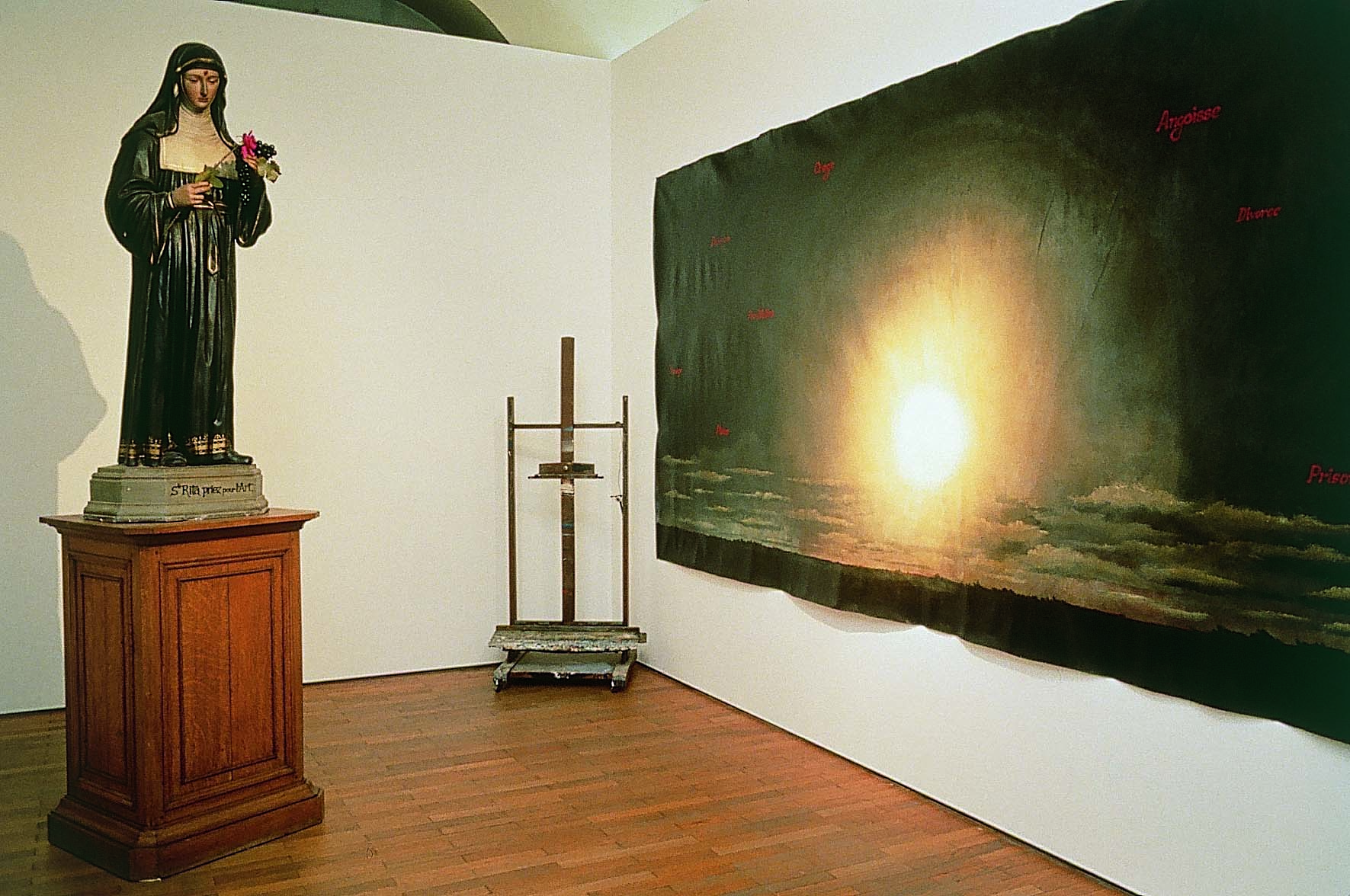
Jacques Charlier – Art forever
Born in 1939 in Liège (Belgium), Jacques Charlier discovers his interest in art at the age of fifteen when, as a self-taught, he starts to collect all kinds of biographies and contemporary art books, and catalogues about modern art from which he systematically draws his inspiration. His first exhibitions at the beginning of the 1960s are presentations of outmoded objects gleaned at flea markets which he frequently combines with photographs. In collusion with André Bertrand with whom he works at the Technical Department of the Province of Liège (Service Technique de la Province de Liège [STP], 1957-1977), he realises a series of pictures illustrating his time at the STP. At the time he merely considers these pictures as a reaction against Popart and New Realism. He produces photographic enlargements on transparencies which he places in lightboxes or sticks on boards. He also realises paintings on which he represents objects, scenes, blocks of concrete a.s.o. drawn with black marker (1965-1969). His activities are many-faceted, ranging from poetic texts, guitar pieces and photographs, to the edition of a magazine, mail art, the creation of a centre for artistic detoxification...
In 1970 Marcel Broodthaers introduces him to Spillemaeckers who has just opened the MTL Gallery. It is Spillemaeckers who organises the first exhibition of the STP photographs. During the 1970s, Jacques Charlier leads several concurrent activities. Driven by the dominance of minimal and conceptual art he continues his STP photographic documentation series. It is also at that time that he starts to realise photographs of openings, photo strips, cartoons, musical experimentations...From the very beginning of the 1980s, Jacques Charlier's paintings satire the new trends of the art market. Gradually, small modeled figures are added to the paintings. As far as Charlier's musical activities are concerned, the 1980s break with the "after-punk" style of the group Terril he founds at the end of the 1970s. His new interest now concerns electronically produced music. Each time he publishes a new tape he gives a concert featuring regressive music, sad songs or nonsense songs. The middle of the 1980s is also marked by Charlier's taste in mises en scène in which he reduces paintings to mere elements among others. La chambre d'ennemi (Ghent, 1986) includes the participation of live actors in addition to furniture and a display of objects capable of conveying the most fabulous atmospheres. La vie éternelle (1987) presented in Düsseldorf, Mons and Nantes partakes of that same idea. As from 1986, Jacques Charlier increasingly makes use of antique frames and causes the artificial ageing and crackling of paintings; he also resorts to all kinds of fake names and imaginary art critiques. Overtly seeking the contrast to "Modern Painting", Jacques Charlier introduces again objects from flea markets in his works and asserts his strong intention to break with styles, to create confusion and to intermingle artistic trends in implosive scenarios.The essential part of what Jacques Charlier insistently calls his "activities" consists in his tireless leaping from one painting to the next, from one scene and from one technique to the next so as to draw a red herring across the trail and create confusion.Text: Cécilia Bezzane